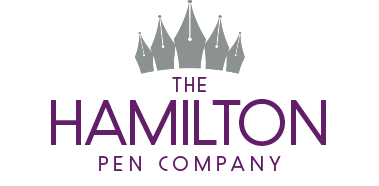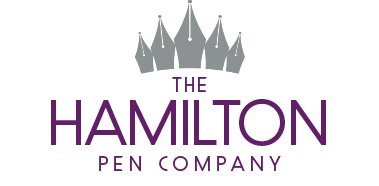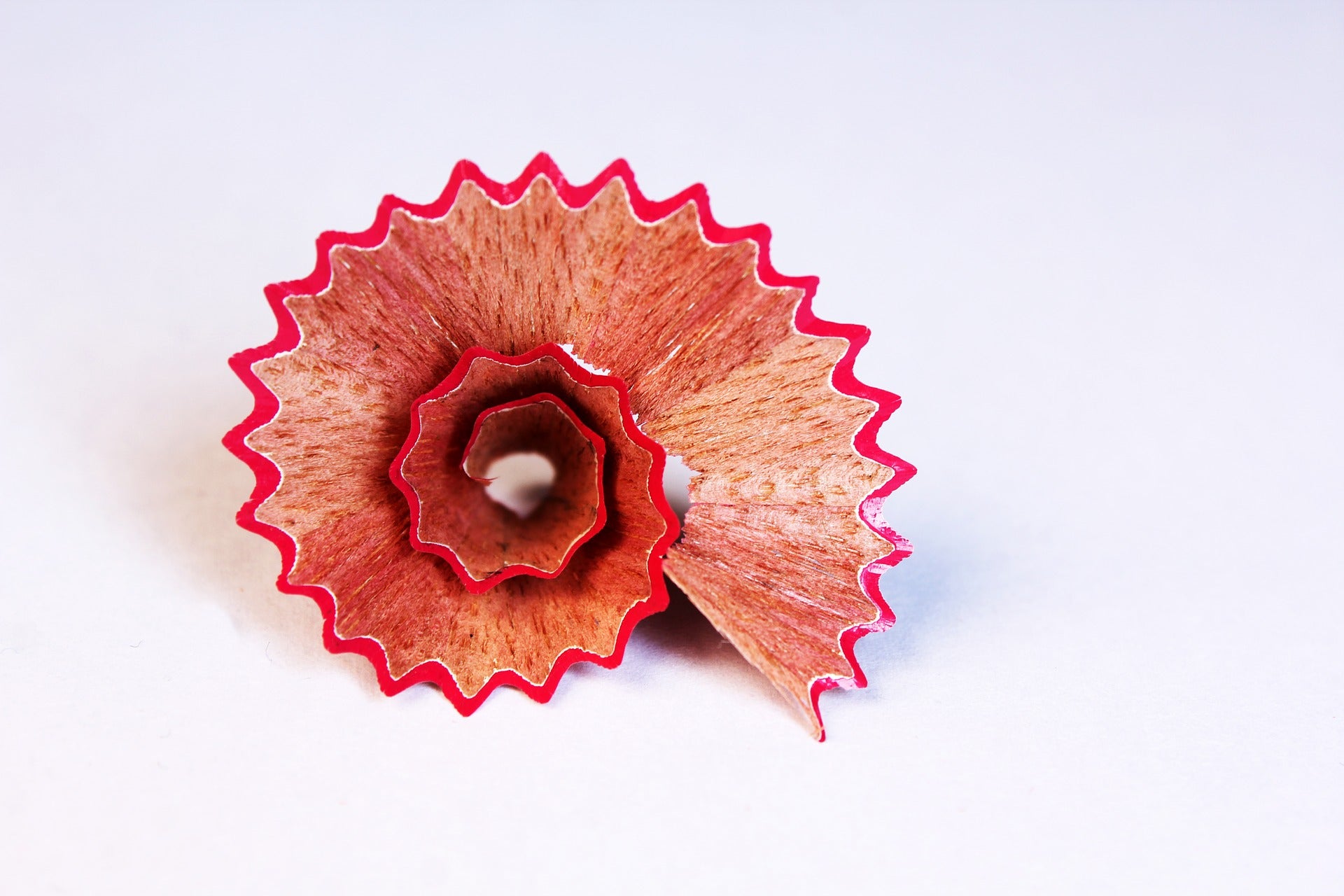I can use pens, but pencils? That’s where I draw the line… An ode to the Pencil
When was the last time you used a pencil? Were you pessimistically attempting a cryptic crossword? Were you creating your next groundbreaking artwork? Were you marking an oaky surface for the design of a beautiful cabinet?
Chances are, the last time that you used a pencil was in primary school, quietly breaking off the tip so you could go and hang-out with your friends at the sharpener on teachers desk. In those dreamy days of childhood, your pencil was your tool of trade, your weapon of choice and the implement which connected you and your friends in learning, creativity and most importantly, procrastination.
As adults we rarely use a pencil where another tool is available; be it the beautiful fountain pen gifted to you to celebrate your promotion, or the trusty ballpoint that has just the right level of scratchiness and inkflow that gives you peak satisfaction on a Monday morning.

The humble pencil has a long and diverse history; from its origins as an artists brush-like tool, its early stylus forms in roman times, the advancement into graphite cores and the various iterations of its simple design for the modern connoisseur. Regardless of historical chronology, one fact remains the same - an unsharpened pencil is pointless!
So whether you are an artist, writer, craftsman or a six year old with a penchant for fluffy toppers and a tip-grip, a sharpener is a vital utensil for your kit. Now, you may be asking yourself ‘how was the pencil sharpener invented?’ - Oh, you weren’t? Well, stick with me whilst I introduce some pub quiz fodder in to your lives.
Did you hear about the argument between a pencil and a sharpener? The sharpener made a better point: A brief History of the Pencil Sharpener
Unsurprisingly, whittling was the earliest form of pencil sharpening. Although satisfying in its craft, this was ultimately deemed time-consuming, tedious and in-exact.  So in 1828, Parisian Mathematician Bernard Lassimone patented his ‘Taille Crayon’ - or ‘pencil sharpener’ to the anglophones among us. This invention, although safer than whittling, was equally as time-consuming. A decade later, the British wanted a piece of the pie and Cooper & Eckstein debuted the ‘Patent Pencil Pointer’ - credit given for alliteration and the britishness of their eponymy.
So in 1828, Parisian Mathematician Bernard Lassimone patented his ‘Taille Crayon’ - or ‘pencil sharpener’ to the anglophones among us. This invention, although safer than whittling, was equally as time-consuming. A decade later, the British wanted a piece of the pie and Cooper & Eckstein debuted the ‘Patent Pencil Pointer’ - credit given for alliteration and the britishness of their eponymy.
Later branded as ‘Styloxynon’, it was strikingly similar in description to Lassimones design, with two sharp files set at right angles in a small block of wood. Through the magic of branding and marketing, its popularity grew especially after a write-up appeared in The Mechanics Weekly which described it as ‘the ingenious little instrument’.
Major changes were not made for a further decade when another Frenchman, Therry des Estwaux, designed a conical-shaped device which allowed all sides of the pencil to be whittled simultaneously - this was 2B a game changer! For the remaining part of the 19th century, the mass manufacture of pencil sharpeners was big business, with American companies exporting throughout Europe and new innovations and designs regularly being released.
 In 1896, an American A.B. Dick sought to make the sharpening needs of pencil-users even more efficient with the design of the ‘Planetary Pencil Pointer’. Taking alliteration tips from the British, Dick designed a machine which allowed the user to place the pencil into a mounted holder as two milling disks revolved on the axis, orbiting the tip of the pencil. This was the first instance of the heavy-duty, piece of desk art, with the winding handle which is familiar to school children worldwide.
In 1896, an American A.B. Dick sought to make the sharpening needs of pencil-users even more efficient with the design of the ‘Planetary Pencil Pointer’. Taking alliteration tips from the British, Dick designed a machine which allowed the user to place the pencil into a mounted holder as two milling disks revolved on the axis, orbiting the tip of the pencil. This was the first instance of the heavy-duty, piece of desk art, with the winding handle which is familiar to school children worldwide.
Shortly after, the poetically named ‘Love Sharpener’ was designed by John Lee Love, a carpenter by trade. Love’s design was born of his need for a portable, easy-to-use, mess-free option and amounted to a light-weight, crank-powered sharpener with the addition of a shavings receptacle. The patent provides further instruction that the sharpener could also act as ‘...A paper-weight, desk ornament, and for other similar purposes’.
In 1904, the Olcott Climax Pencil Sharpener was the first sharpener with a cylindrical cutter and spiral cutting edges on the market. The construction of the machine was based on the importance of delicacy when working with pencils and allowed for a significant speed and accuracy improvement on previous models. The Climax was able to achieve 56 hair fine shavings off the tip through one turn of the crank because of its unique arrangement of gears and cutting blades.
Historically speaking, categorisation of pencil sharpeners is threefold: Abrading machines which utilise sandpaper or file-type products to wear down to the lead, Milling cutters with a grinding action across multiple cutting edges, and blade-based systems which make use of single or multiple blades to slice through the wood revealing the lead.
This remains the case in the 21st century, as the 20th Century was a time of little change in the pencil sharpener world, beyond the exciting innovation of electric pencil sharpeners. These were commercially produced from 1917 in Minneapolis by Farnham Printing & stationery Co. These were not widely available to the public until the 1940’s, remaining a sought-after item for the most stylish and avant-garde office worker. With electric models of similar systems adapted, and ultimately the move away from pencils and the move toward digital expression taking over into the 21st century, this is where the cyclical nature of history comes to life, pencil sharpeners are back!
Why do pencils shave? To look sharp: Latest Innovations in Pencil Sharpening technology
The human economy of artisanal crafts and services boomed from the start of the 21st century and saw a huge global growth of farmers markets, ‘etsy’ and juices made from things which shouldnt be juices - I’m looking at you Kale! This rise in demand for high quality goods and services and our desire to be connected to things of excellence and beauty translates to our relationship with our tools.
We have moved away from our industrial, clinical roots. In a world of disengagement, apathy and slang we no longer understand, we deserve beautiful things which perform. In a stationery retrocede, designers and innovators are taking the optimal aspects of the sharpeners of times-passed, and engaging with the precision and engineering excellence available to create sharpener products which not only outperform their predecessors, but are finely crafted objects of beauty.
 Brahman Design invigorates our need for simple elegance with the Høvel pencil plane. A modern take on the early whittle-based designs, Høvel functions as a miniature plane with the freedom to craft the point required for the job at hand. Although small, the Høvel pencil plane is a precision machined brass piece weighing in at 90 grams which can be placed in an Ash wooden base for extra impact.
Brahman Design invigorates our need for simple elegance with the Høvel pencil plane. A modern take on the early whittle-based designs, Høvel functions as a miniature plane with the freedom to craft the point required for the job at hand. Although small, the Høvel pencil plane is a precision machined brass piece weighing in at 90 grams which can be placed in an Ash wooden base for extra impact.
Far removed from its historical cousins, the Høvel is a stylish addition to the workplace or it can be stowed for safety in a Brahman Design leather sheath for sharpening on the go. Using the Høvel is an experience part-way akin to using a pocket knife and a single blade sharpener. The design of the Høvel, unlike the typically enclosed single blade sharpener, allows for freedom of movement in the sharpening process and therefore a variety of outcomes for the pencil itself. This particular tool is well suited to all pencil users whether craft based, contractor, artist or casual employer of the unassuming pencil.
 In a similar ilk to the Høvel pencil plane, Caran d’Ache present us with the pencil peeler. Caran d’Ache comes from the Russian ‘karandash’ which translates to ‘pencil’ which in turn is rooted in the Turkish ‘Kara Tash’ referring to blackstone - the origins of graphite. It would therefore seem that this Swiss designer/creator of writing and drawing instruments is an authority on all things pencil, especially given their century of experience in the industry. As a manual sharpener, using the peeler gives the kinesthetic sensory experience of sharpening. Although a simple design, the peeler is leading the way in soft material sharpening.
In a similar ilk to the Høvel pencil plane, Caran d’Ache present us with the pencil peeler. Caran d’Ache comes from the Russian ‘karandash’ which translates to ‘pencil’ which in turn is rooted in the Turkish ‘Kara Tash’ referring to blackstone - the origins of graphite. It would therefore seem that this Swiss designer/creator of writing and drawing instruments is an authority on all things pencil, especially given their century of experience in the industry. As a manual sharpener, using the peeler gives the kinesthetic sensory experience of sharpening. Although a simple design, the peeler is leading the way in soft material sharpening.  The ergonomic design of the anodised aluminium frame allows for exact pressures to be applied, essentially freeing the lead of the wood of a pencil. A peeler is particularly well suited to artists pencils with softer cores as well as being suited to a variety of sharpening techniques beyond the standard form, including; needle, chiselled or round head styles. The Caran d’Ache Pencil peeler is exactly what it appears to be; looks like a potato peeler...but for pencils - stylish simplicity exemplified.
The ergonomic design of the anodised aluminium frame allows for exact pressures to be applied, essentially freeing the lead of the wood of a pencil. A peeler is particularly well suited to artists pencils with softer cores as well as being suited to a variety of sharpening techniques beyond the standard form, including; needle, chiselled or round head styles. The Caran d’Ache Pencil peeler is exactly what it appears to be; looks like a potato peeler...but for pencils - stylish simplicity exemplified.
As we have talked about Caran d’Ache, it would be remiss to not talk about the pencil sharpening machine. Caran d’Ache played its part in the revolutionary history of the machine sharpener as its 1933 design achieved levels of precision previously unseen in the sharpener world. This product became the benchmark for quality and precision in sharpener technology going forward for the designers.  A current limited release model, the Brut Rosé Lacquer Finish machine sharpener is not just substance, but pure, painfully-cool style. The release is limited to just 4,478 pieces representing the altitude of the Matterhorn in Switzerland, unnecessarily specific but delightful in its detail! The machine itself is far more than the stylistic features, it is an allrounder which can address the sharpening needs of hexagonal and round pencils ranging from 6mm to 10mm regardless of whether they are hard or soft materials. In a nod to the finer details, it maintains a length adjustment screw allowing for pencil point differential, large capacity storage for shavings and high resistance steel cutters. In the same way that the Høvel pencil plane and Caran d'Ache Pencil Peeler represent an homage to simpler times, the Caran d’Ache pencil sharpening machine celebrates the innovation and entrepreneurial spirit of the industrialists and innovators of the 20th century.
A current limited release model, the Brut Rosé Lacquer Finish machine sharpener is not just substance, but pure, painfully-cool style. The release is limited to just 4,478 pieces representing the altitude of the Matterhorn in Switzerland, unnecessarily specific but delightful in its detail! The machine itself is far more than the stylistic features, it is an allrounder which can address the sharpening needs of hexagonal and round pencils ranging from 6mm to 10mm regardless of whether they are hard or soft materials. In a nod to the finer details, it maintains a length adjustment screw allowing for pencil point differential, large capacity storage for shavings and high resistance steel cutters. In the same way that the Høvel pencil plane and Caran d'Ache Pencil Peeler represent an homage to simpler times, the Caran d’Ache pencil sharpening machine celebrates the innovation and entrepreneurial spirit of the industrialists and innovators of the 20th century.
The humble pencil may be a simple tool but it’s a powerful one; it can create works of art, prose of influence and prestige, and aid in our everyday lives. Keeping that small, seemingly insignificant pencil sharp may not appear noteworthy but it is often the most mundane of tasks that are in fact quite profound.
Images:
Taille Crayon - LessayCatus
Planetary Plane Pointer- TackyRaccoons



